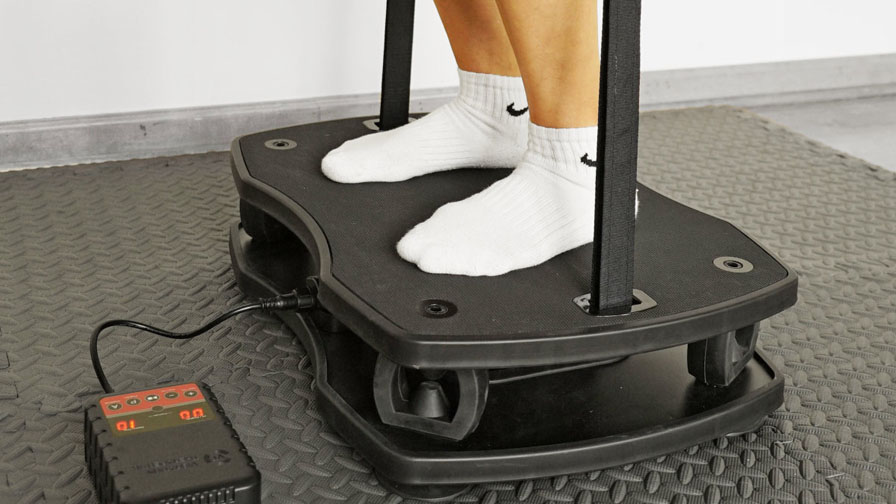
How Does Vibration Therapy Work?
Vibration therapy has been increasingly recognized for its unique effectiveness in treating many medical conditions, especially some hard-to-diagnose and hard-to-treat health issues that mainstream medicine methods fall short of.
Millions of vibration plates have been sold in the past a few years. Vibration therapy is gaining popularity as vibration plates become more affordable.
Vibration plate users, practitioners and their social media networks are the major drive for the development of vibration therapy.
Scientific research on vibration therapy is just catching up but still in its preliminary stage. Most research projects are literature reviews. Some small scale clinical trials were conducted, scattered across a wide variety of subjects.
Due to limited resources (funding), these clinical trials were not adequately designed and many were not fully implemented, and therefore did not produce consistent results. None of the clinical trials is completed for testing multiple parameters and their combinations to identify any treatment modalities in terms of parameter, procedure, dosage and efficacy.
Nevertheless, scientists did observe solid evidences of health improvement from using vibration plates. These early stage clinic trials provide directions for promising vibration therapy applications.
Explorers are not waiting until scientifically approved treatment modalities becoming available. They conduct research and experiment on using vibration plate to solve their own health issues. Successful stories are abundant. The experiences they share greatly advance the development of vibration therapy.
On the other side, there are a lot of groundless claims of health benefits, mostly originated from marketing hypes sellers and manufacturers made up to promote their vibration plates. Some of those claims are well disguised with pseudo-science. Some can even be harmful. They lead to misconceptions that hinder the development of vibration therapy. This is also the reason that opposing opinions consider vibration therapy as a fraudulence.
Well, sellers may promote vibration therapy in some fraudulent ways, but vibration therapy as a methodology is not a fraudulence.
There are scientific approaches to study, understand and debate vibration therapy. Vibration stimulation can affect our body physically and physiologically, and therefore has the potential to be utilized as a therapeutic intervention.
The evidences of health benefits from using vibration plates are solid as approved by millions of users and practitioners. It is just that we lack a systematic knowledge and scientific methodology about vibration therapy.
As a vibration plate designer, and a genuine researcher devoted to vibration therapy, I share my years of studies, experiments, and knowledge on this website.
- A Physical Therapy with a Unique Intervention
- The Treatment Intervention
- Vibration G-force, a Dynamic Influence
- Rapidly Repeated Muscle Contraction
- Muscle Contraction - a Instinct Intervention
- Influence of Vibration-induced Muscle Contraction
- Activate Musculoskeletal System
- Activate Neuromuscular System
- Skeletal Muscle Pump Effect - Enhancing Peripheral Circulation
- Influence on Cellular Processes
- Health Improvement Applications
- Peripheral Circulation Enhancement
- Microcirculation Improvement
- Lymphatic Drainage
- Muscle Building
- Tissue Degeneration Prevention
- Nerve Disorder Treatment
- Muscle, Tendon & Ligament Repair
- Bone Density Increase
- Summary
A Physical Therapy with a Unique Intervention
Vibration therapy is a special physical therapy which utilizes a vibration plate to provide the treatment intervention.
Some popular physical therapy exercises can be performed on vibration plates to achieve enhanced effectiveness.
Vibration therapy treats pain and function issues related to our musculoskeletal system and neuromuscular system, through applying mechanical stimulation on our muscles, tendons, ligaments, bones and nerves.
Vibration stimulation can make our skeletal muscle pump effect to work more effective for improving peripheral circulation of blood and lymph.
What makes vibration therapy different from regular physical therapy is its unique intervention: a dynamic pushing force produced by vibration plate. The magnitude and pattern of this pushing force is represented by vibration G-force.
The Treatment Intervention
Vibration G-force - a Dynamic Influence
Vibration plate applies a dynamic pushing force on our body, moving our body up and down in fast pace.
This pushing force is the direct treatment intervention. Its magnitude and pattern is represented by the vibration acceleration which is usually expressed as G-force.
In each vibration cycle, G-force fluctuates between the max positive value and the max negative value, creating a dynamic pushing force on our body in a rapidly repeated short pulse pattern.
One of the most important characteristics of vibration G-force is that it can produce high magnitude mechanical stimulation to our body without stressing our muscles and bones. Vibration G-force makes the treatment intervention more effective and efficient.
My study of vibration therapy is to study vibration G-force's unique physical and physiological influence on our body.
Rapidly Repeated Muscle Contraction
Vibration stimulation can be used to induce fast pace skeletal muscles contraction. This is because of skeletal muscle's instinct stretch reflex response.
Skeletal muscle contraction is usually commanded by brain will. For example, you decide to curl your arm and so you commend your biceps to contract.
Skeletal muscles can also contract without brain command when they are suddenly stretched. For example, when you accidentally step into a pothole, the posterior leg muscles of your other leg are suddenly stretched, and they instantaneously contract to prevent the fall. This involuntary reaction is called stretch reflex response.
Stretch reflex response is our natural protective mechanism that stabilizes our body and maintains the autonomous balance.
When you perform squat exercise on a vibration plate, vibration motion stretches your leg muscles repeatedly in fast pace and you leg muscles contract in respond to each stretch.
Vibration-induced muscles contraction is involuntary on a fast pace, versus the voluntary slow pace muscle contraction we get from regular physical activities.
The pace of muscle contraction is decided by the frequency of the vibration plate. On a 30Hz vibration plate, your muscles contract 30 times per second.
Stretch reflex response makes vibration therapy unique.
Muscle Contraction - an Instinct Intervention
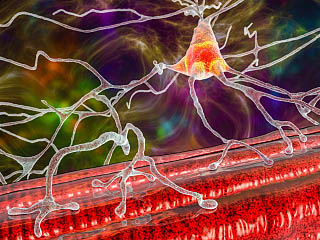
Vibration-induced muscle contraction is the key of vibration therapy.
While the pushing force that a vibration plate applies to our body is the direct intervention, the pulling force of muscle contraction (the secondary intervention) has the real therapeutic significance.
Muscle contraction is our natural body mechanism, so it is truly a none-invasive, instinct intervention that works in harmony with our body systems.
Vibration-induced muscle contraction inherits the dynamic characteristics of vibration G-force, and produces a rapidly repeated pulling force on our muscles, tendons, ligaments, and bones, making it a more effective mechanical stimulation to influence our physiological processes.
To understand the mechanism of vibration therapy, we need to understand the physiological influences of vibration-induced muscle contraction on our body.
Unless otherwise indicated, "muscles" in this website means the skeletal muscles, versus smooth muscles or cardiac muscles.
Muscle contraction is an excellent medicine. Vibration stimulation can make this medicine even more effective.
The Influences of Vibration-induced Muscle Contraction
Activate and Exercise Musculoskeletal System
The rapidly repeated muscle contraction produce a dynamic pulling force on our muscles, tendons, ligaments and bones, activating and exercising their functionality effectively and efficiently.
If not exercised, these tissues will have cell degeneration issues and their functionality will get deteriorated.
Activate and Exercise Neuromuscular System
Vibration-induced muscle contraction is the reaction of stretch reflex response, an autonomic neuromuscular function.
Vibration stimulation activates sensory and motor nerves and exercise their functionality repetitively.
Skeletal Muscle Pump Effect - Enhancing Peripheral Circulation
Through skeletal muscle pump effect, vibration-induced muscle contraction can effectively improve the functionality of peripheral vascular system and lymphatic system.
Muscle contraction applies pressure on vessels that are intertwined with the muscles. The pressure forms a pump function to push the blood and lymph flow in the vessels. This phenomenon is called skeletal muscle pump effect.
Skeletal muscle pump effect is essential for a healthy circulation. It helps blood and lymph relay and distribution through small vessels. It is especially important for returning blood back to heart, and draining lymph back to blood stream.
The rapidly repeated muscle contraction induced by vibration multiplies the performance of the skeletal muscle pump effect. Vibration therapy usually can achieve immediate peripheral circulation improvement.
Influence on cellular processes - cell regeneration
The physiological processes behind the muscle contraction can promote cellular processes to produce building blocks for cell regeneration.
Vibration G-force can achieve the needed magnitude of mechanical stimulation for signaling hormone production and stem cell differentiation.
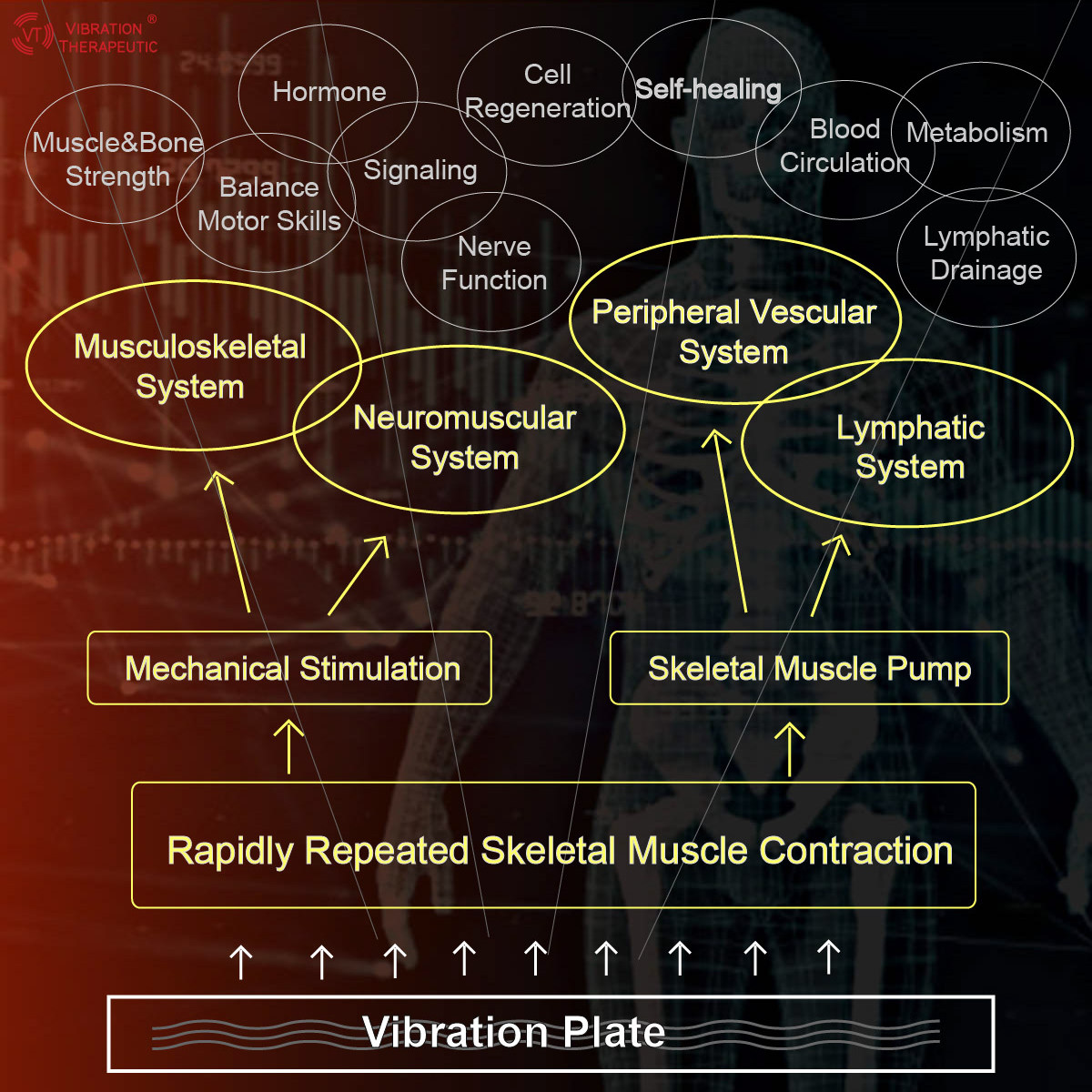
Our body systems need to keep activated for their health. Regular physical exercise is essential for the activation. Adding vibration stimulation to regular physical exercise can better satisfy this requirement.
Vibration's intensive mechanical stimulation pulses engages our musculoskeletal system and neuromuscular system to exercise more effectively, maintaining the performance and functionality of muscles, tendons, ligaments, bones and peripheral nerves.
Vibration therapy enhances the functionality of body systems, exercises tissues, boosts metabolism, and facilitate our self-healing processes. All these effects work together in an intricate and complementary manner, and achieve a comprehensive health condition improvement.
Health Improvement Applications
Peripheral Circulation Enhancement
Vibration-induced muscle contraction promotes the skeletal muscle pump effect and enhances the peripheral body fluid flow.
Body fluids are mainly blood, lymph and tissue fluid. They transport and exchange gases and other substances needed in the metabolism processes. Maintaining a healthy body fluid circulation is essential for the supply of oxygen and nutrient to cells and the removal of metabolic wastes.
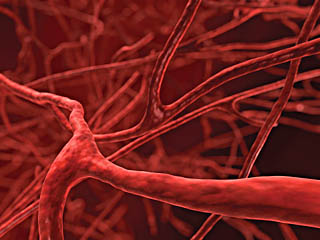
The rapidly repeated skeletal muscle contraction induced by vibration applies fast pulse of pressure on the adjacent blood and lymph vessels, accelerating fluid flow in the vessels.
The involuntary skeletal muscle contraction cooperates with the instinct vascular smooth muscle contraction. The two contraction forces work together to boost the liquid transmission and distribution in the peripheral vascular system. Vascular smooth muscles work inside the vessels in a slow pace, while skeletal muscles work from outside of vessels in a faster pace.
Muscle contraction involves cellular activities that also promote tissue fluid flow. The physical and chemical cellular processes that perform skeletal muscle contraction involve and lead to intracellular fluid and extracellular fluid transmission and exchange, creating an internal drive for tissue fluid flow.
Compared to cardio exercise, which enhances circulation by engaging heart-work to pump the blood farther, vibration exercise enhances circulation by promoting peripheral body fluid flow and exchange, supplementing the functionality of the cardiovascular system.
Microcirculation Improvement
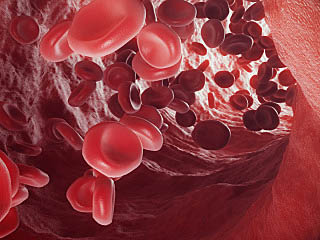
Vibration therapy is particularly effective for achieving microcirculation improvement.
Inside tissues, blood circulation and exchange relies on the microcirculation system, which is composed of smaller vessels including arterioles, venules, and capillaries.
The blood pressure generated by heart and arteries is weakened when reaching into smaller vessels. Muscle contraction can put additional pressure outside the smaller vessels to boost blood flow and distribution.
Capillary vessels play the ultimate task of the cardiovascular system: delivering oxygen and nutrients, and taking away carbon dioxide and wastes.
Tissue damage can impair capillary vessel's functionality, compromising microcirculation. While the power of cardiovascular system become weak when reaching capillary, vibration therapy can be use to improve microcirculation, accelerating tissue repair in the recovery process.
For elderly or physically weak people that cannot endure extensive physical exercise, vibration therapy can be a practical, and perhaps an essential solution for microcirculation improvement.
Lymphatic Drainage
Vibration therapy is an optimal solution for lymphatic drainage.
Unlike cardiovascular system which employs heart to pump the blood, lymphatic system mainly relies on lymphatic vessel contraction and tissue fluid osmotic pressure to move the lymph.
Tissue fluids flow into lymphatic capillaries and become lymph. The flow is driven by osmotic pressure. Subsequently lymph is drawn into lymphatic vessels, then passes through lymph nodes and finally returns to the blood circulation system. The smooth muscles in the walls of lymph vessels rhythmically contract and produce continuous pressure to keep lymph moving on its direction.
Lymphatic vessel contraction and osmotic pressure are not enough for a health lymphatic circulation. Muscle movements are also essential for assisting the lymph move. This is where vibration-induced muscle contraction can help.
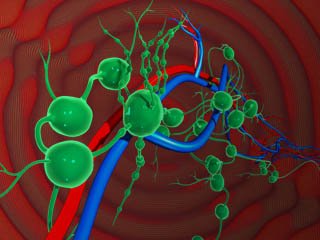
With vibration stimulation, the rapidly repeated skeletal muscle contraction creates pulses of pressure outside of the lymph vessel. In the meantime the contraction of vessel smooth muscles creates pressure inside the vessel. The combined pressures effectively move lymph in the vessels.
Vibration-induced muscle contraction collaborates well with the natural mechanism of lymphatic circulation, making vibration therapy an optimal solution for lymph circulation enhancement.
Medical conditions can impair lymph circulation. The accumulation of excessive tissue fluids in the tissues can cause swelling, infection or cancer because toxins and wastes trapped in the tissues. Muscle contraction and cellular activities can enhance lymphatic drainage by driving tissue fluids into lymph system and draining the lymph back to the blood circulation system.
A healthy lymph circulation needs certain physical activity to keep muscles move. When the physical activity is not enough, or medical condition causing lymph flow problem, vibration therapy can effectively and efficiently fulfill this role.
Muscle Building
Studies show that through vibration exercise, skeletal muscles reach fatigue and achieve hypertrophy much faster than in regular physical exercise. Muscle fatigue promotes muscle growth.
Muscle and strength training with vibration stimulation is more efficient and effective.
For example, when you do squat exercise on a 30Hz vertical movement vibration plate, besides doing voluntary up and down repetitions, you are also doing 30 tiny involuntary up and down repetitions in every second, in respond to the vibration stimulation. Your leg muscles contract 30 times in a second. Your muscle contraction pulls or presses the connecting tissues 30 times in a second. Each tiny repetition involves its metabolic processes and ATP consumption.
Vibration exercise is not a passive exercise. It actually works your muscles more efficiently and effectively.
Athletes use vibration exercise to achieve muscle building result faster, less less repetitions and exercise time.
Tissue Degeneration Prevention
Lack of physical activity, aging and medical conditions can cause tissue degeneration, like muscle atrophy, tendon and ligament deterioration, and bone resorption.
Tissue degeneration often happens to senior and physically weak people who are not able to keep sufficient physical exercise activities.
Vibration exercise does not have to be physically stressful to achieve a good exercise results. It fits well for senior and physically weak people to fight tissue degeneration.
Nerve Disorder Treatment

Neuromuscular functionality plays the commending role in muscle's stretch reflex response. In respond to stretch stimulation of vibration, nervous system command and coordinate certain muscles to contract, and other muscles to relax rapidly. The process exercises the nervous system and improve its communication functions, enhancing balance, motor skills and gait.
Clinical studies have been conducted to explore using whole body vibration therapy to treat neurological disorders, including Parkinson's disease and cerebral palsy. There are many positive results.
The improvement of circulation from vibration therapy also contributes to nerve health by supplying sufficient nutrients to nerve cells.
Cell Regeneration
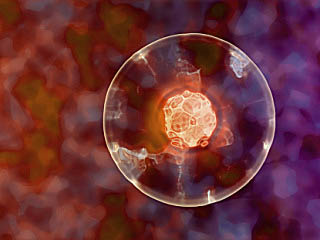
Vibration stimulation can promote cell regeneration through influencing cellular processes and hormone production. Vibration therapy helps soft tissue repair and bone density increase.
Scientists have been studying human tissue's cellular and molecular mechanism in respond to mechanical stimulation. It is suggested that mechanical stimulation, when reaching a certain magnitude, can influence cellular processes, such as boosting protein performance, altering gene expression, and regulating stem cell differentiation. These are the essential processes for cell regeneration.
The mechanical stimulation produced by vibration acceleration may satisfy the required magnitude to influence cellular processes.
Vibration stimulation may also promote the body system to secrete hormones, enzymes and other cell building materials. The improved circulation enhances the process of supplying sufficient oxygen and nutrients. Vibration therapy provides an overall environment for cell regeneration.
Muscle, Tendon & Ligament Repair
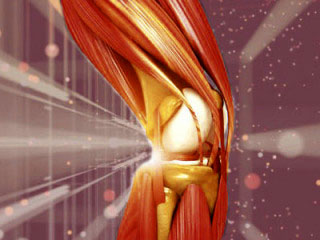
Naturally, our muscles are capable of repair and regeneration after minor tears and bruises. Severe physical injury and repeated injury can lead to extensive fibrous tissue formation in the repair process. Fibrous tissues, in place of the original muscle tissues, impair the functionality of the muscles. Muscles cells usually do not restore in fibrous tissues.
The intensive pulses of mechanical stimulation induced by vibration, through its impact on the tissue structure and the cellular processes, may lead to the resorption of fibrous tissues and regeneration of real muscle tissues.
When the living muscle cells grow back in their original place to replace the fibrous tissues, the muscles can resume their strength and performance.
Tendons and ligaments are also consist of living cells and has certain ability of self-repair. Vibration therapy may promote the repair of tendons and ligaments, the same way like the repair of muscles.
Tendons and ligaments have a poor blood supply and therefore take longer time to repair after injury. Vibration therapy can enhance the microcirculation and speed up the repair process.
Vibration therapy has been proved effective to speed up the rehabilitation process for muscles, tendons and ligaments. It probably help preventing fibrous tissue from forming in the recover process. It is especially effective to treat chronic soft tissue injuries, and restore the “dead” tissues.
Bone Density Increase

Vibration therapy has been known for treating bone loss.
Vibration-induced muscle contraction creates pulling force on the connecting bones. The magnitude of this pulling force may satisfy the requirement to initiate bone formation process.
The intensive mechanical stimulation pulses from the muscle contraction activates and signals body system to produce hormone and other building blocks needed for osteoblasts to grow. Osteoblasts are cells that secrete structural substance needed for bone formation.
Randomized controlled clinical trials have provided quantitative evidences that vibration therapy is effective in improving bone density and treat age related bone resorption.
Summary
The mechanism of vibration therapy is to activate and promote our body systems to function in their instinct ways. The mechanical stimulation from skeletal muscle contraction is the key medical intervention to initiate the processes. Through fast pace skeletal muscle contraction, vibration therapy enhances the functionality of our body systems for circulation improvement, tissue activation and cell regeneration.

Vibration therapy is easy and safe to practice. It is non-drug non-invasive and does not produce side effect. The short pulses of intensive mechanical stimulation initiates positive body system response without stressing or damaging the tissues.
The significance of vibration therapy is its unique potential to solve health issues that are challenging for traditional medicines. In fact such a potential has been proved as effective in countless practicing cases.

Aging, medical condition or lack of physical exercise can hinder our body systems' functionality in material supply, coordination and communication. Vibration therapy is an practical and effective solution to activate and enhance these functionality in a natural way.
The approach of vibration therapy is not just to pinpoint an isolated medical condition and depress or relieve the symptom. Rather, it take our body in its entirety, activates and facilitate our natural biological processes, mobilizes our instinctive functionality, and achieves fundamental health condition improvement.
In essence, the mechanism of vibration therapy is to facilitate and stimulate our body system's own mechanism to perform. The intervention and the processes are natural, and the effects are fundamental.
Current knowledge about cellular processes and their molecular mechanism is still very limited. Vibration's pulsed intensive mechanical stimulation may be a great opportunity for scientific study now and in the future.
- Jay Tang
- About
-
Interpreting life science from an engineering perspective.
Featured Posts:
